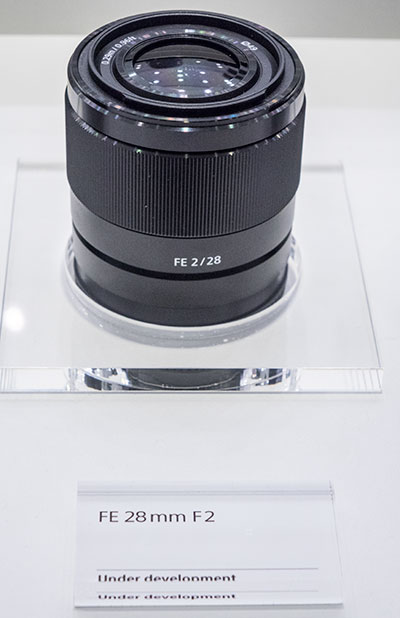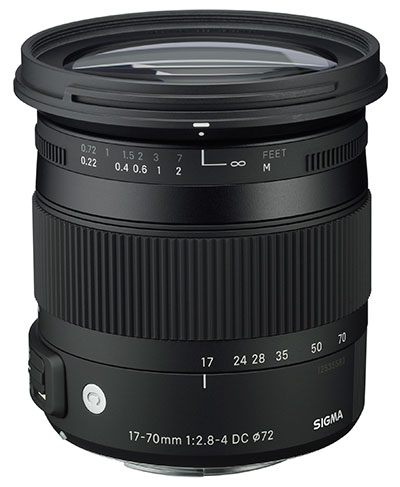| Sony Corporation (“Sony”) today unveiled a portfolio of advanced next-generation products which will help accelerate the revitalisation of the electronics business.
Kazuo Hirai, Sony Corporation’s new President and Chief Executive Officer, speaking at Sony Europe’s press conference at the IFA electronics show in Berlin, launched a range of compelling products – each emphasising Sony’s stated strategic focus on Mobile, Digital Imaging and Gaming.
“This is an extraordinary company going through extraordinary times. It forces us to confront difficult realities and make hard business decisions. We must look at ourselves honestly and hold true to the values and purpose of Sony. I am determined to do this with a laser-like focus, speed and execution,” said Hirai. “The products I unveil today will show Sony’s long-standing ambition to deliver what customers value – a simpler, easier, more entertaining and user-friendly experience.”
The range of new products announced in Berlin includes three new Xperia smartphones – one featured in the forthcoming James Bond movie ‘Skyfall’ – a new splash proof Tablet, a new hybrid slate/laptop VAIO PC, a new NEX camera with built in Wi-Fi enabling feature-adds post purchase, and enhanced NFC enabled headphones and audio devices.
Sony also unveiled a stunning 84-inch BRAVIA 4K TV, promising a totally immersive experience and building on Sony’s acknowledged professional expertise in 4K with acclaimed broadcast camera the CineAlta F65 and 4K cinema projection system.
Hirai vowed that each product would reflect the ‘One Sony’ ambition, the organisation’s drive to deliver technically-advanced products and compelling consumer experiences through greater synergies across all Sony’s businesses from electronics to games, movies and music.
“As “One Sony” we are joined together by a single vision, which I define with one particular Japanese word – Kando. It means to move people emotionally. Sony will bring a smile to the faces of a global audience” said Hirai.
MOBILE
Mobile devices are the gateway to Sony’s user experience. Adding to our acclaimed Xperia smartphones for providing premium entertainment experiences, Sony Tablets will be brought to market under the Xperia brand as of September 2012 to expand these great mobile experiences to the tablet arena.
The latest Sony mobile devices, including Xperia smartphones, Tablets and VAIO PCs, will boast Sony’s media applications, with the new interface designed to enhance the user experience in high picture and sound quality. It will enable users to enjoy and share music, photos, and movies in a simple and intuitive way. These features will be available across new Xperia smartphones, Xperia Tablet and selected VAIO PCs.
Furthermore, the new Xperia smartphones and VAIO PCs promise to bring consumers the ultimate cross-device connectivity. Through Sony’s One Touch function, which incorporates NFC (Near Field Communication) technology, users can easily and instantly enjoy their music and photos across an array of NFC enabled Sony devices by simply touching one device to the other without the need for Bluetooth or Wi-Fi set-up.
Introducing the new products, Hirai added: “Individual Sony products will entice and inspire people. But what’s also important is that by connecting and combining hardware, network services and applications, we will provide a truly remarkable and compelling experience.”
DIGITAL IMAGING
Sony’s mobile products are pioneering new ways to capture great digital pictures, whilst delivering an enhanced user experience through further, deeper convergence of hardware, content and services. The new NEX-5R model is the latest Digital Imaging product to deliver enhanced usability.
The NEX-5R compact system camera – with built in Wi-Fi – allows users to check the image, adjust camera exposure and control the shutter wirelessly from their smartphone. This makes it ideal for taking posed family pictures via the timer, where the image can be checked on the smartphone before the pose is broken. It also boasts “Fast Hybrid AF” giving DSLR-like focussing responses when capturing fast-moving action.
The NEX-5R is the first camera compatible with PlayMemories Camera Apps, a service for downloading new apps such as “Time-Lapse” and “Cinematic Photo” directly to the Wi-Fi enabled camera.
Sony is also introducing the new ‘wearable’ video camera, the HDR-AS15 with ‘ExmorR’ CMOS Image Sensor and SteadyShot image, great for skydiving or mountain biking.
GAMING
This autumn, Sony Computer Entertainment is due to launch Wonderbook, creating a multi-dimensional world using PlayStation Eye and augmented reality technology. It’s an experience like nothing else. The first Wonderbook title will be Wonderbook: Book of Spells, created in collaboration with J.K Rowling.
IN DETAIL
Detailing the product offensive at IFA, the Sony President and CEO highlighted the following innovations:
Xperia Smartphones
The integration of Sony Mobile Communications earlier this year was an important step for Sony. The company launched the first Sony smartphones to market earlier this year – the Xperia NXT (NEXT) series.
The next introduction is the Xperia T, Xperia V and Xperia J, building on the acclaimed arc design. They will be brought to the market over the next few months.
Xperia T is the new global flagship model that delivers the best high definition experience in a smartphone to date. It has a 4.6inch display powered by Sony’s Mobile BRAVIA Engine. Consumers can watch videos shot in Full 1080-pixel HD. The 13 mega-pixel fast-capture camera goes from sleep to snap in an instant with a single key press. The most amazing feature is how easily consumers can connect Xperia T to other devices to enjoy their content – with just one touch.
Xperia V is LTE enabled for super-fast network performance. It also comes with the highest level of water resistance in a smartphone, so users can continue using their Xperia V, come rain or come sunshine.
Xperia J is an eye-catching combination of stylish design and a stand-out screen size at a competitive price point.
Xperia Tablet S
The new Xperia Tablet combines a splash-proof body with high quality sound and a thinner, lighter design than its predecessor. It also offers a new app called ‘Socialife’ which enables users to enjoy SNS and news feeds in one viewer with a magazine-like layout. Together with new covers, stands and dock speaker, it is a communications device that will bring new style and fun into your life and appeal to customers of all ages and lifestyles. Running a NVIDIA® Tegra® 3 quad-core processor and Android 4.0.3 platform, it’s got all the power consumers will need to enjoy their favourite media, apps and games.
VAIO™ Duo 11
VAIO Duo 11 is a unique, Surf-Slider design hybrid PC which allows smooth sliding between slate mode and keyboard mode, ideal for being on the move. It features a thin, compact body with high performance, and a sophisticated stylus for the easy capture of handwritten digital notes, maximising the touch capability of Windows 8.
VAIO™ Tap 20
VAIO Tap 20, designed to leverage Windows 8, is a 20-inch, tabletop PC which tilts from desktop to lay-flat style. It can be a conventional desk top PC for personal use or a multi-media device – if used flat – for family use, for everything from playing board games to music editing or reading.
Audio Visual: ‘One Sony’ brings professional know-how and greater connectivity to consumer experiences
TV has always been part of Sony’s DNA, a symbol of constant innovation. It is the one product that still connects family and friends through shared experiences, more than any other.
Sony’s first 84-inch BRAVIA 4KTV
The new Sony 84-inch BRAVIA 4KTV boasts a 4K (3840 x 2160) LCD panel in the industry’s largest inch class (*1) and incorporates Sony’s ‘4K X-Reality PRO’ super-resolution high picture quality engine, meaning users will be able to reproduce a variety of content – including movies, TV programs, photos and games – to beautiful 4K picture quality ready to enjoy on the stunning 84-inch screen. This formidable combination seamlessly delivers a high-resolution large-screen picture with high-quality powerful sound to provide consumers with an immersive experience, unlike anything offered by existing televisions. The new BRAVIA 4K TV will be available worldwide, from the end of 2012.
*1: As of August 29, 2012.
Sony continues to take a lead role in advancing 4K technologies and is playing a leading role in professional 4K content creation through the CineAlta ‘F65’ camera, capable of shooting 4K content and beloved by leading film makers, and also the 4K digital cinema system used in the professional field. In the world of consumer electronics, the 4K home theatre projector for family use has been extremely well received since its launch last year.
The launch of the 84-inch 4K BRAVIA TV demonstrates the new and exciting consumer home-experiences made possible through professional technologies, advanced through the company’s ‘One Sony’ approach to hardware and content innovation.
HMZ-T2 Personal 3D Viewer
Lighter and more comfortable than its predecessor, the all-new Personal 3D Viewer from Sony is a head-mounted, High Definition 2D and 3D personal display with virtual 5.1 surround sound. It’s perfect for movies and gaming, with twin OLED screens that display vivid, super-sharp images (with zero cross-talk interference) to absorb consumers in a truly personal experience.
MDR-1 headphones
The new MDR-1 headphones are the result of collaboration between Sony Music artists and Sony engineers to deliver sound quality that accurately reproduces the original intentions of the musicians. The MDR-1 RBT is NFC enabled, and carries Sony’s One-touch function making it easy to share music across a range of NFC enabled devices by instantly setting up a wireless connection between devices, with just one touch. There is no need for any Bluetooth or Wi-Fi set up.
SRS-BTM8 wireless NFC Bluetooth speaker
The SRS-BTM8 portable NFC Bluetooth wireless speaker from Sony lets you enjoy music from your smartphone or tablet in high quality audio, anywhere in the house. With its built in One-touch function from Sony, with just one touch to the top of the speaker with any NFC-enabled Xperia smartphone – including Xperia T and Xperia V smartphones from Sony – music will be streamed instantly. There is no need for Bluetooth set-up.
Partnership with Berliner Philharmoniker and Berlin Phil Media
Sony has extended its partnership with the world renowned Berliner Philharmoniker, and Berlin Phil Media, which offers the “Digital Concert Hall” streaming service. For the past two years, Sony has video-streamed Berliner Philharmoniker’s musical performances for customers worldwide to enjoy on Sony’s home entertainment products. Under this new partnership, Sony will also supply professional products, which incorporate its key technologies, whilst also providing technical support for the creation and streaming of Berliner Philharmoniker content through the service. This partnership will further enhance collaboration and innovation around audio development, and produce feedback which will be invaluable for Sony.
Sony HDR-AS15 action-cam
Ideal for sports lovers, the HDR-AS15 is a new type of camera; a ‘wearable’ video camera. It features Sony’s SteadyShot image stabilisation technology to deliver stunningly smooth footage which is ideal for filming sports scenes such as sky diving, mountain biking or snowboarding.
Equipped with built-in Wi-Fi, consumers can remotely control this video camera from smartphones and upload the recorded data online immediately. It also features a 170° wide angle Carl Zeiss lens.
List of all products and services launched at IFA 2012 for the UK market
- BRAVIA 84” 4K TV
- Head Mounted Display HMZ-T2
- AV Receiver STR-DA5800ES
- Speaker System SS-NA2ES, SS-NA5ES, SS-NA8ES, SA-NA9ES
- VPL-HW50ES Home Cinema 3D projector
- Wireless NFC Bluetooth speaker SRS-BTM8, SRS-BTV5
- Headphones MDR-1 (MDR-1R/1RBT/1RNC)
- NEX-5R – Wi-Fi enabled camera
- Action Cam HDR-AS15– personal camera
- PlayMemories Series (new Camera Apps functionality)
- Xperia Splash/Water-proof Smartphone
- Xperia Tablet S
- Music Unlimited – New Subscription Tier, “Access” for PCs and PlayStation(R)3
- VAIO™ Duo 11 (Slider hybrid PC)
- VAIO™ Tap 20 (Tabletop PC)
- VAIO touch range (VAIO™ Duo 11, VAIO™ Tap 20, VAIO T Series 13, VAIO L Series)
|







































